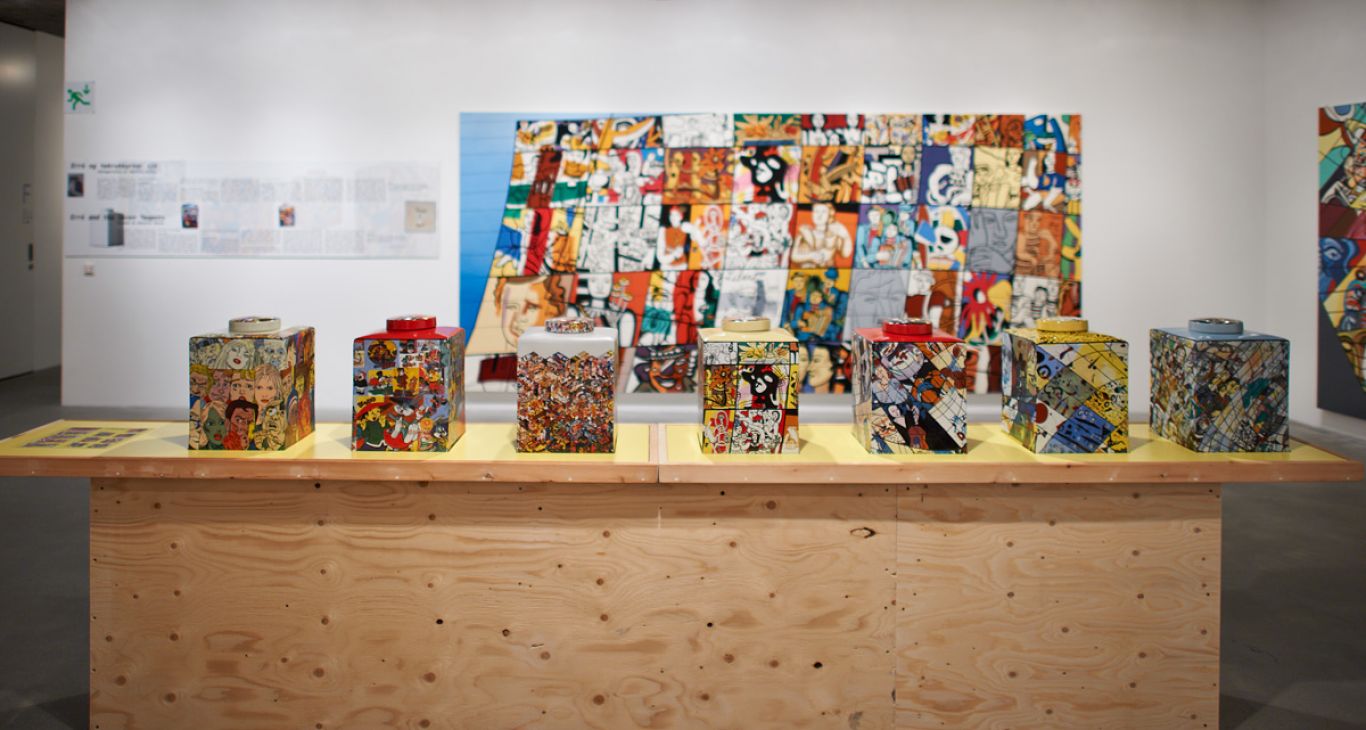Choose year
Erró and the Seven Tea Jars
This exhibition is presented by Hafnarhús in conjunction with DesignMarch 2012, a satellite project of World Design Capital Helsinki 2012. It is the first public exhibition of a series of seven ceramic tea jars with decorations conceived by Erró at the instigation of art-publisher Stéphane Klein. These works, imposing in size, are displayed with some of the large Erró paintings that served as their models. The pots, as well as the canvases, are gifts to the Reykjavik Art Museum from the artist.
The story of the tea jars
The Concept: Early in the year 2000, Stéphane Klein happened on a seventeenth-century Chinese tea pot in an antique store. Oversized and square-shaped, this teapot later became the impetus for a long collaborative process between Klein and several contemporary artists, first Robert Combas and Jan Voss and then, from 2007 to 2009, Hervé Télémaque and Erró. In each case the project was to manufacture ceramic jars, in runs limited to 12 (8 copies + 4 artists’ copies), based on the form of the Chinese model, with decorations by an artist. Each project took two years to complete.
Stages of production
Developing the mock-ups and choosing colours: With Klein’s approval, Erró chose to pay homage to masters of contemporary and cartoon art with a series of seven jars. He set out to build on existing images, namely photographs of paintings from his series Art History (1991-1992) and some of his “scapes,” Comicscape (1972), Detailscape (1985), and Facescape (1992). The photos were scanned and the images digitalized. Sequences were then selected, adjusted to scale, and the images printed on paper. The paper dummies were then placed directly on ceramic mock-ups, and when the proposal had received final approval, some prototype tea jars were made. Colors could then be refined as needed, before manufacture of the series was launched.
Constructing and decorating the “bodies”: All the technical preparation was accomplished in France but the ceramic pieces were made and finished in China, in a small factory which devised new production methods specifically for this project. Since the jars were unusual in both size and form and had to be hand-built, without the aid of a wheel, the feat lay in achieving perfect symmetry of the sides, to avoid the risk of breakage in the kiln. As it turned out, the breakage rate was more than 50%, and many attempts were necessary. On emerging from the kiln, the white pieces were hard but still porous, ready to absorb decoration. The jars were fired at 800°, to fix the solid colors, and then fired again, more gently, to transfer images via the technique of decalcomania. This technique was the clear choice as other methods proved no match for the complex forms and surfaces, finesse and precision of detail, nor the large number of varied colours. Decalcomania begins with a thin transparent film, on which the decorative motifs are imprinted and the colours applied with the aid of a serigraphic screen. The film is then applied to the pot, which, when heated, absorbs the decoration as the film disappears. For some jars, this was not the end of the process. Light brush-finishing ensued, mainly to reinforce the black lines, creating a slight but palpable relief on the ceramic surfaces.
Signature: At last, the decoration complete, the jars were returned to France, where the artist authenticated them, signing the base of each piece and adding the date of completion.
Click on the pictures to view some more on Instagram and post your own by using the #hashtag of the exhibition.
Remember to follow Reykjavík Art Museum on @reykjavikartmuseum.








